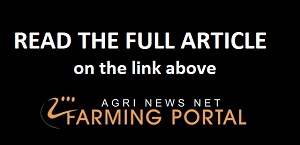But the country’s most technological farmer is not even considering crossing the border. “Where better to farm than in Brabant? We are 150 kilometers from a world-class port, we have the manufacturing industry and all the knowledge right around the corner. The infrastructure is top-notch.”
“Even though we have to deal with countless rules and restrictions and land is very expensive, we are still able to provide the highest yields in the world. So, we’re not doing too badly at all in Brabant.”
These are the words coming straight from the mouth of Jacob van den Borne, who, according to his business card is a potato farmer from Reusel, better known as perhaps the most innovative precision farmer in the world. Tellingly, we speak to Van den Borne via a video link while he is harvesting potatoes in his self-driving AVR harvester.
 Robotics to drive precision harvesting market
Robotics to drive precision harvesting market
Van den Borne comes from the third generation of a family of farmers. His grandfather started with cereal grains in the 1950s. Van den Borne likes to take his grandfather as an example. “My grandfather wrote in his diary every night after work what he had done that working day. That diary was a reference work, which he consulted every time when something was not going well in the field.”
What the 40-year-old entrepreneur means to say is that not much has actually changed since then. His grandfather also collected information by recording it, and he, too, used the data to improve the harvest. The principle is the same: to measure is to know.
Tailor-made hardware and software
There are differences, of course. Technology is now playing a major role in agriculture. Van den Borne’s sheds are filled with the newest generation of tractors and trailers for planting, harvesting, and fertilizing, among other things, and are all equipped with sensors. What’s more, Jacob van den Borne has a customized package of hardware and software to measure data about the soil and crops.
He has already been using drones since 2011. Van den Borne’s hands are somewhat less stuck in the mud than his grandfather’s. Instead, his hands are more often hovering over keyboards and screens.
For example, in preparation for planting, Van den Borne (weather permitting) launches a drone that photographs the bare soil of his fields. The photos are converted on the computer into an organic matter map showing humus variances. But even after the plants have sprouted, electronically collected data forms the basis on which he makes his farming decisions.
Ewout Kieckens is a Dutch journalist in Rome who writes about Italian lifestyle and culture. He has written books on diverse subjects such as the Vatican and Italian design. He is very interested in innovations, especially Italian contributions to progress.
















